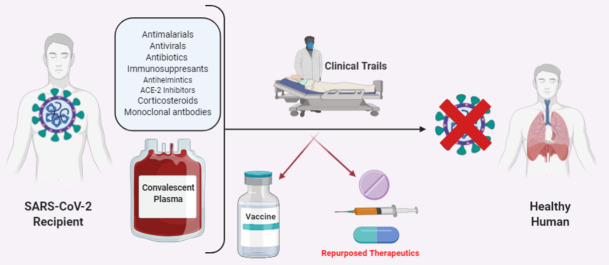- Record: found
- Abstract: found
- Article: not found
Potential therapeutic targets for combating SARS-CoV-2: Drug repurposing, clinical trials and recent advancements

Abstract
The present pandemic of SARS-CoV-2 has been a tough task for the whole world to deal with. With the absence of specific drugs or vaccines against SARS-CoV-2, the situation is very difficult to control. Apart from the absence of specific therapies, the lack of knowledge about potential therapeutic targets and individual perception is adding to the complications. The present review describes the novel SARS-CoV-2 structure, surface proteins, asymptomatic and symptomatic transmission in addition to the genotype and phenotype of SARS-CoV-2 along with genetic strains and similarity between SARS, MERS and SARS-CoV-2. Therapeutic strategies such as inhibition of the endocytic pathway and suppressing RNA polymerase activity by metal ions, which could be quite beneficial for controlling COVID-19, are outlined. The drug repurposing for SARS-CoV-2 is discussed in detail along with therapeutic classes such as antivirals, antibiotics, and amino quinolones and their probable role in suppressing SARS-CoV-2 with reference to case studies. The ongoing clinical trials both with respect to drug repurposing and vaccines are summarized along with a brief description. The recent advancements and future perspective of ongoing research for therapy and detection of SARS-CoV-2 are provided. The review, in brief, summarizes epidemiology, therapy and the current scenario for combating SARS-CoV-2.
Graphical abstract
Related collections
Most cited references103
- Record: found
- Abstract: found
- Article: not found
Clinical features of patients infected with 2019 novel coronavirus in Wuhan, China
- Record: found
- Abstract: found
- Article: not found
A Novel Coronavirus from Patients with Pneumonia in China, 2019
- Record: found
- Abstract: found
- Article: found

